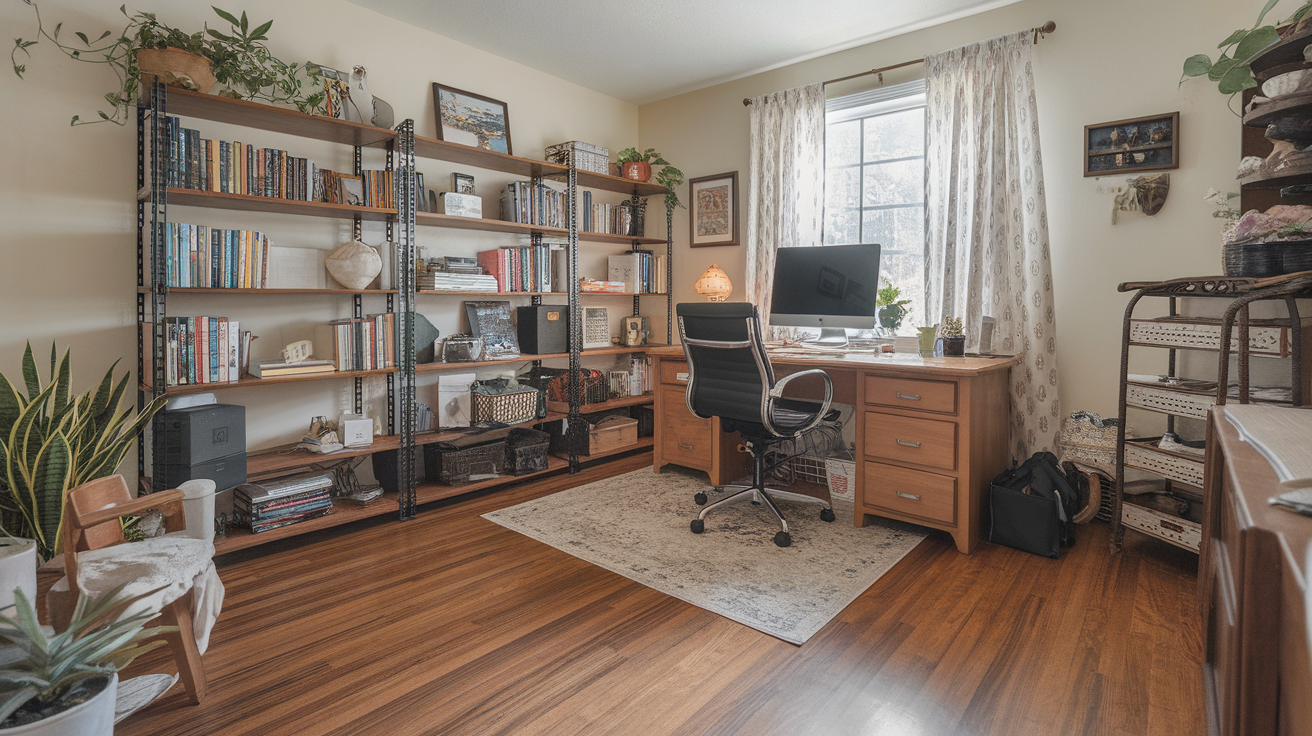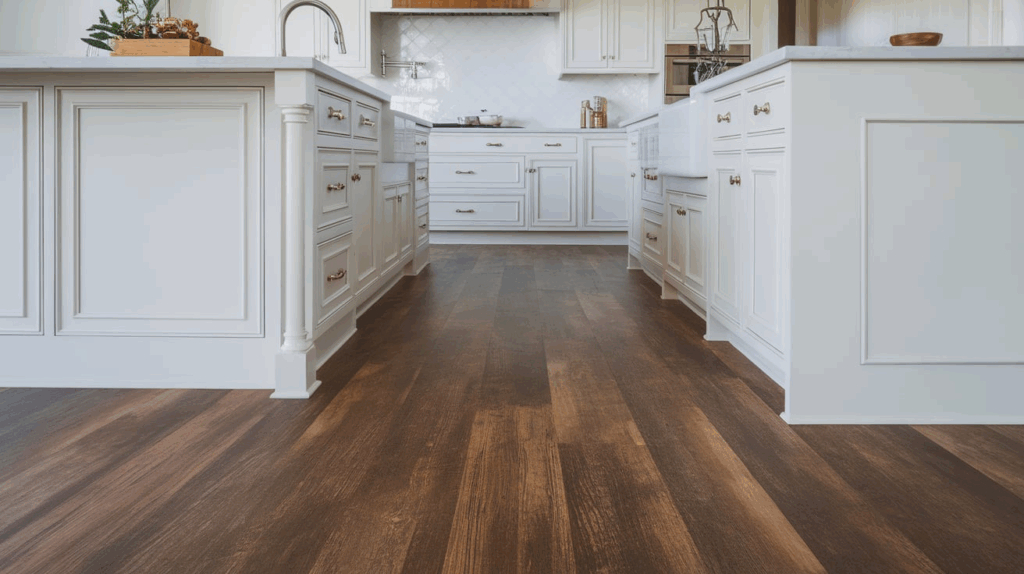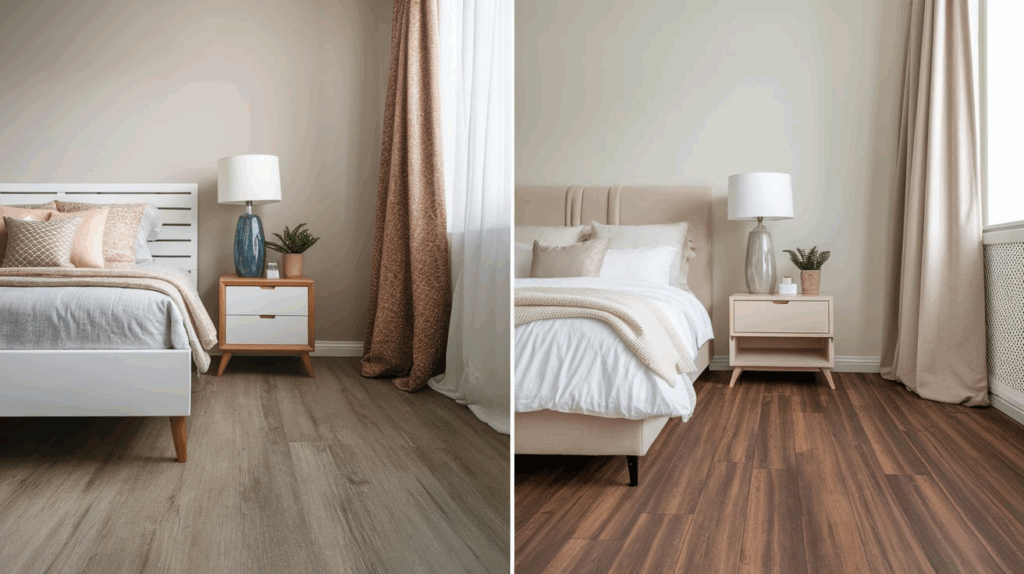When I started looking for new flooring, I kept hearing about laminate and LVP.
At first, I had no idea what the difference was or which one would work better in my home.
I wanted something that looked nice, didn’t cost a fortune, and could handle daily wear and tear.
After doing a lot of digging, I realized that laminate and luxury vinyl plank (LVP) are two of the most popular choices out there – and for good reason.
They both have great features, but they’re not the same. If you’re also trying to pick between the two, you’re in the right place.
In this blog, I’ll walk you through the main differences between laminate and LVP flooring.
I’ll cover things like durability, water resistance, looks, cost, and more, so you can choose what’s best for your space.
What Is Laminate and LVP Flooring?
If you’re new to home flooring, the terms ‘laminates’ and ‘LVP’ might sound a bit confusing. I felt the same way at first! However, don’t worry; it’s quite simple once you break it down.
Laminate flooring is made from a mix of wood-based materials.
It has several layers, including a strong bottom layer, a wood-fiber core, a photo layer that looks like real wood, and a top layer that protects it from scratches.
LVP, or luxury vinyl plank, is made from plastic materials. It also has several layers, but it’s 100% waterproof. LVP is great if you want something that can handle spills and moisture.
It’s designed to look like wood or stone, and it feels soft and quiet underfoot.
Both are easy to install and popular for good reason.
Laminate vs LVP: Key Differences

Laminate and LVP look alike, but key differences in material and performance can impact your flooring choice.
1. Material and Construction
Laminate flooring is made from layers of compressed wood fibers, known as high-density fiberboard (HDF).
It has a photo layer that gives it the look of wood, and a strong wear layer on top that helps protect it from scratches and wear. It’s mostly made from wood products and feels solid underfoot.
LVP, short for luxury vinyl plank, is made entirely from plastic (PVC). It has several layers too – a backing layer, a printed design layer, and a clear wear layer.
Some premium types even have a rigid core for added strength. LVP is more flexible than laminate and is built to resist moisture from the ground up.
2. Water Resistance
Laminate flooring can handle small spills or moisture if cleaned up right away, but it’s not waterproof.
If water sits on it too long, it can seep into the seams and cause the boards to swell or warp. This makes laminate a risky choice in bathrooms, laundry rooms, or basements.
LVP is completely waterproof. You can soak it, mop it, or spill on it without worry. That’s why it’s a top pick for areas that get wet often, like kitchens, bathrooms, and mudrooms.
If water resistance is high on your list, LVP wins this round hands down.
3. Durability and Lifespan
Laminate is fairly durable. It resists dents and scratches well, especially if you go for higher-end brands with thicker wear layers.
With regular maintenance and no major water issues, it can last anywhere from 10 to 25 years.
LVP is designed to be tough. Its vinyl layers are more resistant to dents, scratches, and general wear, even in high-traffic areas.
It’s a great choice if you have pets, kids, or heavy furniture. It can easily last 15 to 25 years, and some styles even come with lifetime warranties.
4. Look and Style Options
Laminate has come a long way in recent years. Thanks to high-quality printing and surface embossing, it can look very close to real hardwood, with textures that match the grain and knots.
It’s a great choice if you love the traditional wood look.
LVP also offers a wide range of style options, from wood to stone to concrete looks. Many LVP products feature high-definition prints and textured finishes, so they not only look real but feel real too.
It’s available in a wide range of colors, widths, and textures.
5. Feel Underfoot and Noise
Laminate floors tend to feel hard and can be a little noisy when you walk on them. Without a good underlayment, footsteps may sound hollow. If comfort is important, this might be a drawback.
LVP feels softer and warmer underfoot, especially if it comes with a built-in backing or if you install it over a cushioned underlayment. It also absorbs sound better, so it’s quieter when people or pets move around on it.
6. Installation
Laminate uses a click-lock system that makes it fairly easy to install on your own. It floats over the subfloor with a foam underlayment underneath to absorb sound and provide cushion.
However, you need to avoid installing it in damp areas.
LVP is one of the easiest flooring types to install. You can get it in click-lock form for floating floors or glue-down for extra stability.
Some types can be installed directly over tile, concrete, or even old vinyl. It’s a great choice for DIYers, especially in tricky spaces.
7. Cleaning and Maintenance
Laminate is easy to clean – just sweep and vacuum regularly to keep dust away. But you do need to be careful with water.
Don’t use a wet mop or steam cleaner, as this can cause damage over time. Stick with damp cloths or special laminate cleaners.
LVP is very low maintenance. You can sweep, vacuum, or mop it without any worry. Its waterproof nature means you don’t have to stress about spills or moisture buildup.
For busy households, LVP offers a lot of convenience in the cleaning department.
8. Cost and Value
Laminate is usually more budget-friendly. You can find good options starting at around $0.60 per square foot, with higher-end styles reaching up to $4.00. It gives a realistic wood look at a lower cost.
LVP costs a bit more – usually between $2.00 and $7.00 per square foot – but offers added value through waterproofing and a longer lifespan.
Quick Comparision
| Feature | Laminate Flooring | Luxury Vinyl Plank (LVP) |
|---|---|---|
| Material | Wood-based (HDF core) | Plastic-based (PVC layers) |
| Water Resistance | Water-resistant, not waterproof | Fully waterproof |
| Durability | Scratch-resistant, not great with moisture | Very durable and moisture-resistant |
| Lifespan | 10–25 years | 15–25 years |
| Look & Style | Realistic wood visuals | Wood, stone, and textured options |
| Feel Underfoot | Hard, can sound hollow | Softer, quieter with underlayment |
| Installation | Click-lock, DIY-friendly | Click-lock or glue-down, very DIY-friendly |
| Maintenance | Dry cleaning only, avoid wet mops | Easy to clean, wet mop safe |
| Cost | $0.60–$4.00 per sq. ft. | $2.00–$7.00 per sq. ft. |
Now that you’ve seen how laminate and LVP compare, you probably have a better idea of which one matches your home and lifestyle.
Pros and Cons: Laminate vs LVP Flooring
When I was comparing laminate and LVP, I found it helpful to list out the good and bad sides of each, so here’s a quick breakdown.
Laminate Flooring
| Pros | Cons |
|---|---|
| Budget-friendly | Not waterproof |
| Realistic wood look | Can swell with moisture |
| Easy DIY installation | Hard underfoot |
| Scratch-resistant surface | Can be noisy without underlayment |
Luxury Vinyl Plank (LVP) Flooring
| Pros | Cons |
|---|---|
| Fully waterproof | Usually costs more than laminate |
| Comfortable and quiet to walk on | Some products may fade in direct sunlight |
| Durable and pet-friendly | Lower-end options can feel less solid |
| Easy to clean and maintain | May not add as much value as real wood |
I hope these side-by-side pros and cons make it easier for you to weigh your options, just like they did for me.
When to Use Laminate or LVP Flooring
After looking at all the features, I realized each type of flooring works better in certain rooms or situations. Here’s when I’d personally choose laminate or LVP based on what I learned.
When to Use Laminate Flooring

- You want a wood-look floor without the hardwood price tag
- Your space stays mostly dry (like bedrooms or home offices)
- You prefer a firmer feel underfoot
- You’re working with a tight budget
- You’re installing it yourself and want a click-lock system
- You don’t expect heavy spills or water exposure
When to Use LVP Flooring

- You need waterproof flooring for bathrooms, basements, or kitchens
- You have pets or kids and want something super durable
- You prefer softer, quieter floors
- You’re okay spending a little more for long-term peace of mind
- You want an easy-to-clean surface for busy areas
- You need flooring that works well in high-traffic parts of the home
In the end, I found that both laminate and LVP have their sweet spots. Knowing where each one shines can help you choose the right fit for every room in your home.
Conclusion
After looking at all the features, pros, and differences, I can say both laminate and LVP are great options – it just depends on what you need.
Laminate is perfect if you want something affordable that looks like real wood and you’re putting it in a dry area like a bedroom or living room.
On the other hand, LVP is better for places where moisture might be a problem, like kitchens, bathrooms, or basements. It’s also more durable if you have pets or kids running around.
I found that thinking about where the flooring will go and how much traffic it will get helped me decide. You don’t have to spend a lot to get a nice floor – just pick the one that fits your home and lifestyle best.
No matter which you choose, both options can give your space a fresh, updated look.

